Please have a look at the images of the French more complete and recent pages of Scoby.ch to have a better understanding, you can just click an image below :
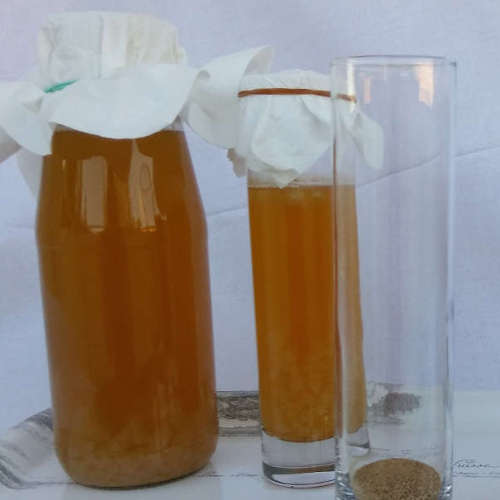
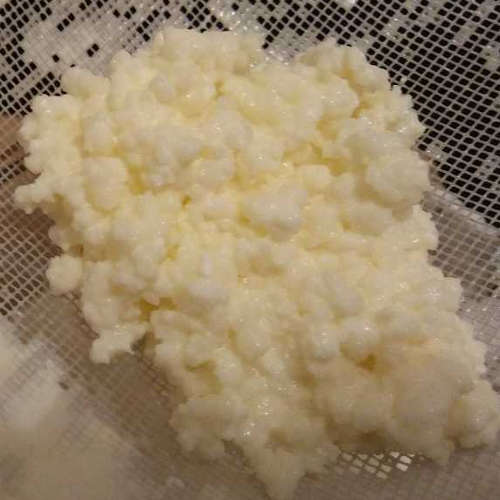
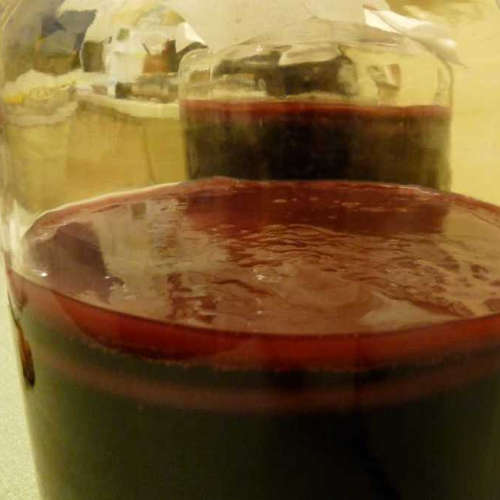
This definition encompass any visible macro structure where different micro-organisms (literally at least one kind of bacteria and one kind of yeast) species collaborate for better chances of survival. We are only interested with the one we eat and/or use either directly or their production inside a very simple environment, mainly a standard kitchen.
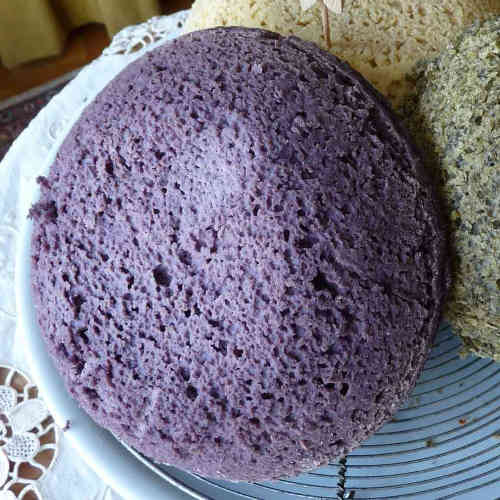
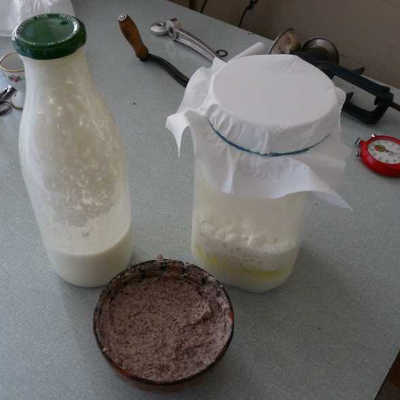
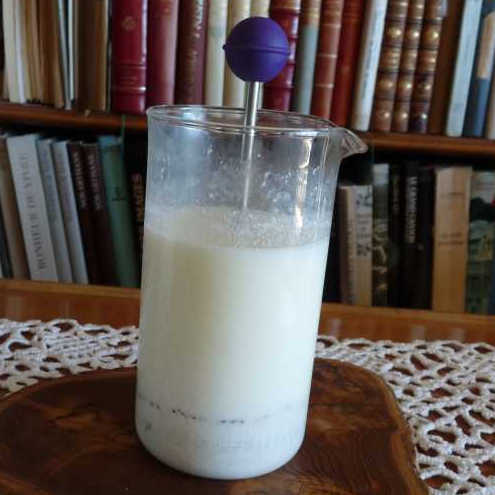
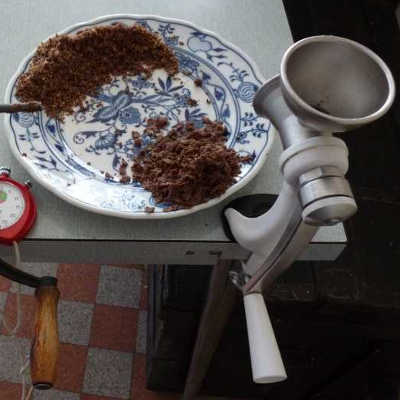
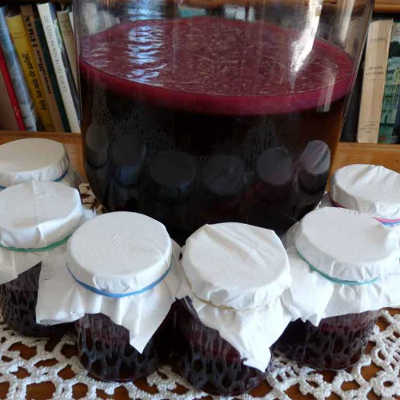
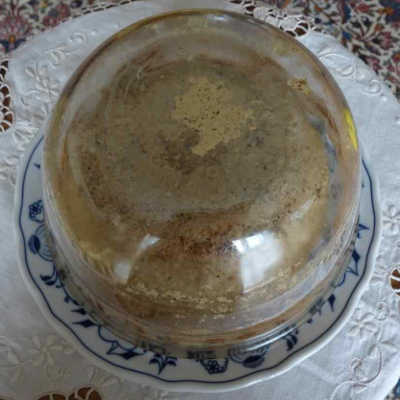
Scoby (*) striving in milk, tea, fruit juice and many other food have common characteristics and handling similarities we discuss here :
Summary of last posts:
Common facts for all Scobys :
- They are collaborative multi-talented strains easily numbering around 20 and more.
- They collaborate between many different species, like bacteria (prokaryote) and yeast (eukaryote that have nucleus for their DNA, like our cells).
- Their micro-organisms communicate between each others with molecular messages called autoinducer and the whole communication process is called quorum sensing.
- Most of them have been selected through thousands years of synergies between humans and micro-organisms. I believe they can be seen somehow as our test tube microbiota as they seem to integrate so easily inside and outside us (It's possible to use milk-kefir as an after shave, and amazingly the kefir odor disappears after about 30 minutes). By the way the real human microbiota is much richer, especially when considering early human populations, but even so, it's nice to have a few billion good bacteria and yeasts in a jar
 , ready to give us a boost.
, ready to give us a boost. - Why is it reasonable to rinse the scobys with a part of the future brew? Because if we want to keep these bacteria in their scoby with their nice cooperative mood we need to show them (Darwinian selection) that it's the only way to survive inside the jar because the ones that are not part of the scoby get through the sieve to be eaten. Why is it more practical and probably healthier to rinse with a part of the future brew ?
- Because in most cases we can just eat the obtained juice! And most of the time we don't rinse because the scoby is dirty but because we want to give a massive advantage to the scoby population. By the way if a scoby is dirty and you have the choice, just use another one, it's much safer than rinsing it to clean it.
- Because it's faster! The future brew is ready just got to use a part of it! It's much simpler than to boil some water, then wait for it to cool down etc. And water rinsing could induce an osmotic shock into the scoby that is much denser "minerally" speaking than a boiled drinking water! And of course never rinse with fresh tape water because it's chlorinated and chlorine will kill many of ours scoby microbes. Yes some people do it, but it's risky and they probably have a tape water of very good quality, by the way it's not because fermentation keeps going on for a few weeks that it means that the scoby is okay, it could be fermenting more or less okay but with a scoby incapable of duplication.
- Faster and same liquid base so no supplementary risks to introduce unwanted germs.
- Sometimes we don't have to wash our scoby. I have been able to keep my milk-kefir scoby very healthy for three years without washing them and using a quite abrasive metallic sieve, finally loosing them because of serial starving periods inside the fridge. Obviously if the scoby did not get dominated by the much more easy to spread free bacteria and yeasts it's because the grains have more specific advantages than just being grains not passing through the sieve!
- May be they practice "quorum lies" (a personal speculation based on life complexity rather than any research, so it's not very solid), telling the outside scoby world to slow down when being part of the scoby would allow them to keep busy and immune to the slow down signal.
- Being part of a scoby offers a protection against chemical agents like antibiotics that may be sporadically present in milk (for fruit juice, pesticides could have a similar effect), the bacteria and yeasts hidden inside the scoby have a much greater resistance and can recover faster when the environment is back to normal.
- The scoby population has probably a lot of direct contacts cells to cells that allow a different and/or a better communication than remote quorum sensing, giving some sort of advantage.
- Why do we need to keep the scoby and not just use part of the brew again and again?
- Because being a scoby is a lot about collaboration between the 20 or so concerned microbes, if they have been so long together it's because they need each other, so keeping a scoby healthy means keeping the variety of the microbial population intact, may be 20 to 50 different species! And variety seems to be good, especially compared to a healthy human gut that got about 2000 different species.
- In comparison 20 to 50 different microbial strains fermenting the same milk without any scoby (could be hard to experiment because tiny scoby exists as well) would drop to a few strains and may be finally only 2, with one specialized on the top being happy with more oxygen and the second on the bottom, their characteristics : faster dividing cycles, better oxygen tolerance etc. would have allow them to completely overgrow the competition! The sad consequence of a too simple environment in this case scoby free! It's interesting to note that our body is able to keep a complex microbiota because it offers a very complex environment to our little friends, so many different strains can strive in different places and protect us against would be invaders that can't stick or dig at theses specific places because they are already taken, if these surfaces are not well occupied our immune system need to do the territorial job instead and it's exhausting, this could be measured with lymphocyte counting in relation with the digestive track. Direct measures are not easy (sampling probably necessary) so volunteers could be rare, and the paradigm may be unethical! Luckily animal research has a clue "Probiotic yogurt offers higher immune-protection ... on rats" and extreme human situations "Probiotic yogurt consumption is associated with an increase of CD4 count" also give interesting information. So what's the use for healthy people? if we extrapolate it could give us more energy, free the immune system to recover faster from hard physical exercises, from lack of sleep etc. Personal opinion I can't prove it, but it's easy to try!
- Scoby have specific feeding patterns that make them more or less easy to care for, for example water kefir inside a minerally rich environment easily get into some sort of overpopulation death, milk kefir grains are much more resistant to starvation and the grains are also more mechanically resistant, and the record holder of the 3 is the kombucha that can be left unchecked for months inside a jar with no care at all and in most cases the brew is still drinkable! Surprise, the kombucha is also the most mechanically resistant of the three scobys! Warning extremes could also lead to extreme situation, so if we quit the standard zone we quit the standard security too! We'll develop that point much further on the kombucha page.
Common handling facts :
- It's amazing to see in videos how often people touch their scobys with bare hands, it's definitely not a good idea to do that because our hands even washed have many unknown micro-organism on them and some could interfere badly with the fermentation.
- To be coherent with the previous points, it would be a good idea to wear a cook hat or something equivalent to avoid dropping dust and hairs inside the scoby, and to avoid speaking or wear a little mask for the same reasons. I know it sounds a bit extreme and probably nobody wear mouth protective mask when scoby-caring in company, but if we don't we test the resistance of our scoby with our mouth germs and it's probably not what we want to do!
- Yes for X thousand years scobys have been handled by humans, they have probably been in contact with almost all possible human germs and have integrated the good ones (the good point, some scobys could be very much human like in term of microbial composition) and eliminated the bad ones, mainly just because people did not keep the batches that made them sick and shared broadly among kins the ones that behaved best and we still do it but at the same time do not want to experience the pathogenic germs, so precautions are interesting to apply.
-
Popular claim : "a bad idea to touch SCOBYs with any sort of metal", WRONG! Stainless steel is fine for handling. All my scobys were often handled with stainless steel gears, especially sieves and spoons to get the milk kefir grains out of the sieve (3 years of stainless steel spoon with the same milk kefir grains that grew very well). The no metal legend comes probably from a time were every metallic kitchen gear was a bit rusty, but we still need careful on a few points :
- Stainless steel is never completely stainless so handling is fine, but it wouldn't be a good idea to ferment something for a month inside a stainless steel jar.
- Most metal sieve are very rough, so they'll hurt the grains a little bit, which is often fine for milk kefir grains that are mechanically very tough, but won't work with water kefir grains that are normally very fragile, except may be the sort that was derived from milk kefir grains (quite a job to accustom them from what I heard, and I tried), but I never found it.
Remarks :
(*) Technically to be labeled as a scoby you need at least one bacteria strain in synergy with one yeast strain, a single strain of bacteria or yeast building a macro-structure would be a SCOB or a SCOY, but in practice they are just films of bacteria or colony of yeast of the same species like the one we find on the surface of some moldy cheese, they may be tasty, but they are not so interesting in term of what we can use them for compared to a standard heterogeneous scoby encompassing about 20 different collaborative strains, they tend to be more resilient counting on each other strength and this diversity also allow us to select the one we need if we want, for example eating a batch production (not the scoby itself) at around 45-50 Celsius degree will select the thermophilous strains if they are present and it will produce a very different batch in the following fermentations.
Scobys are fascinating from in jar observations to our own digestion, they integrate their production into our digestive flora with most of the time positive effects, will discuss that under "Probiotics or Non-probiotic", but we definitely don't want to eat only scoby production (a too narrow segment) of available food. On the other hand we could probably eat only raw fermented food because almost anything can be fermented, but again we'll miss a lot, and it's not only taste based, for example sprouting increases the availability of seeds minerals while synthesizing vitamins, cooking or juicing increase the availability of some compounds like beta-Carotene or lycopene etc. In an another category many fruits, nuts, vegetables can be eaten with none or almost none preparation, bringing along an incredible number of useful nutriments. Also many foods are complementary to probiotics because of their prebiotic effects, for example onions and Jerusalem artichoke are rich in inulin that help some interesting micro-organisms to strive, the principle being that we can't digest it at all or too fast so they get enough, in practice it's a bit more subtle, sometimes negative effects happen, for example with excessive flatulences.
Practically fermented foods have been a staple diet for humans from the start of serious food reserves, so it could be back to the capabilities of building jars something like 20'000 years ago, or may be even much older with the use of natural recipients like hollow rocks? So something is clear as soon as food was stored for more than one or two days in medium temperature conservation through fermentation was the best option, which means to force good micro organisms in, so pathogenic germs don't have the conditions to develop. What sort of major differences do we have now in our modern society? We almost do not rely anymore at all on fermentation for conservation (*2) , even naturally resilient preparations like vinegar or wine have most of the time sulfite added into them.
The consequence of this trend toward sanitization of food is that in many cases we not only don't ingest enough favorable micro-organisms, but we also ingest many conservators scientifically optimized to kill them. In these conditions, the probability to have a balanced digestive flora weakens the more we eat processed chemically stabilized long shelf-life food. So an advantage of having a home reserve of thriving friendly micro-organisms is to get closer to the old traditional micro-living food! And if careful enough (*1) without the higher historical risks of food poisoning.
(*1) It's quite easy, but need to be carefully dealt with in some cases, for example when involving continuous fermentation.
(*2) Exception to this trend are yogurts and cheeses. Yogurts and young fresh cheeses may have a classical probiotic content depending on the starter (*3). Old cheeses by the way most of the time excellent, have a more complex fermentation based on weeks of transformations, pushing the PH up toward alkaline biological process where micro organisms like bacteria and yeasts have finished most of the lactose and start to use available acids to multiply and in the process develop different aromas.
(*3) Starters for yogurts tend to focus on one or two sorts of bacteria while starters for cheeses have a larger micro-organisms population if they are using traditional method with rennet, modern rennet method production is harder on micro-organisms (deep freezing, multi stage filtration etc.) but they would also come directly from the milk or be added separately. Note : Many modern cheeses are made with preselected cultures, consisting of only a few types of microbe, but many traditional cheeses ... can be made with dozens of types of microbe. Interestingly it looks difficult to get information about the bacterial content of traditional rennet, it's a bit like if we'll rather talk about enzymes than bacteria. Anyway, this is a good spot to specify that some perfectly good cheese can be made with a milk kefir starter, the curling coming mainly from the lactic acid kefir production and the maturation from some micro organisms in kefir that deal well with lack of lactose and lactic acid metabolization.
